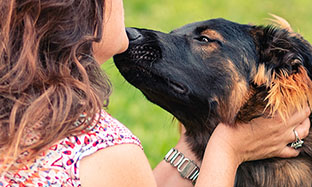
Flea Bites on Dogs: Complete Guide to Treatment and Prevention
As loving pet owners, we understand that our furry friends are not just pets; they are family members. And just like our human family, our pets deserve the best care, especially when it comes to their health. One of the most common and troublesome issues that dogs can face is a flea infestation. Flea bites on dogs can be irritating, and even lead to more severe health problems if left untreated. Let us discuss everything you need to know about fleas on dogs and the ultimate solution.
Understanding Fleas
Fleas are tiny, blood-sucking parasites that can wreak havoc on your dog's well-being. They not only cause extreme discomfort with their itchy bites but can also transmit diseases. Flea infestations are more than just an inconvenience; fleas on dogs can lead to anaemia, skin infections, and even allergic reactions. Recognizing the signs of flea presence on dogs is essential for timely intervention.
Symptoms of Flea Bites on Dogs
- Excessive Scratching and Itching: Flea bites are incredibly itchy, causing your dog to scratch vigorously. If you notice your furry friend scratching or chewing their fur excessively, it could be a sign of fleas.
- Flea Dirt: Fleas leave behind tiny black specks which is nothing but dried digested blood, often referred to as "flea dirt," which can be found on your dog's skin or in their bedding.
Other Signs of Fleas on Dogs
- Restlessness: Infected dogs may become restless, agitated, and unable to settle comfortably due to the discomfort caused by flea bites.
- Redness and Inflammation: Flea bites often result in red, inflamed skin, which can lead to secondary bacterial infections if left untreated.
- Hair Loss: Over time, constant scratching and biting can lead to hair loss, leaving your dog's coat looking patchy and unhealthy.
Preventing Flea Bites on Dogs
When it comes to combating flea infestations, treatment and prevention are key. There are several effective flea treatment options available in the market, such as sprays, spot-ons, chewable tablets, shampoos, and more. These options can help you address the issue and protect your pet from the discomfort and health risks associated with fleas.
Additionally, it is important to remember that fleas spend little time on the body and quite a bit of time in cozy corners of the house, with their larvae hatching around. Hence, along with treating your pet, it is essential to regularly wash their bedding and clean nearby furnishings to prevent re infestations.
Furthermore, fleas can be a threat to the young ones in the house who may accidentally ingest them, leading to tapeworms in children. Therefore, it is crucial to take comprehensive measures to ensure your home remains flea-free.
Conclusion
Flea bites on dogs can be more than just a nuisance; they can lead to severe health issues if left untreated. To provide your furry companion with the best care, it is crucial to recognize the signs of flea infestations and take prompt action. There are various effective flea treatment options available in the market that can help you protect your pet from fleas and the associated health risks.
Remember, a happy and healthy dog is a happy and satisfied family member. So, make sure to choose the right flea treatment option for your pet and maintain a clean and flea-free environment in your home to keep your beloved companion safe and comfortable for years to come.

 Sen.jpg)

